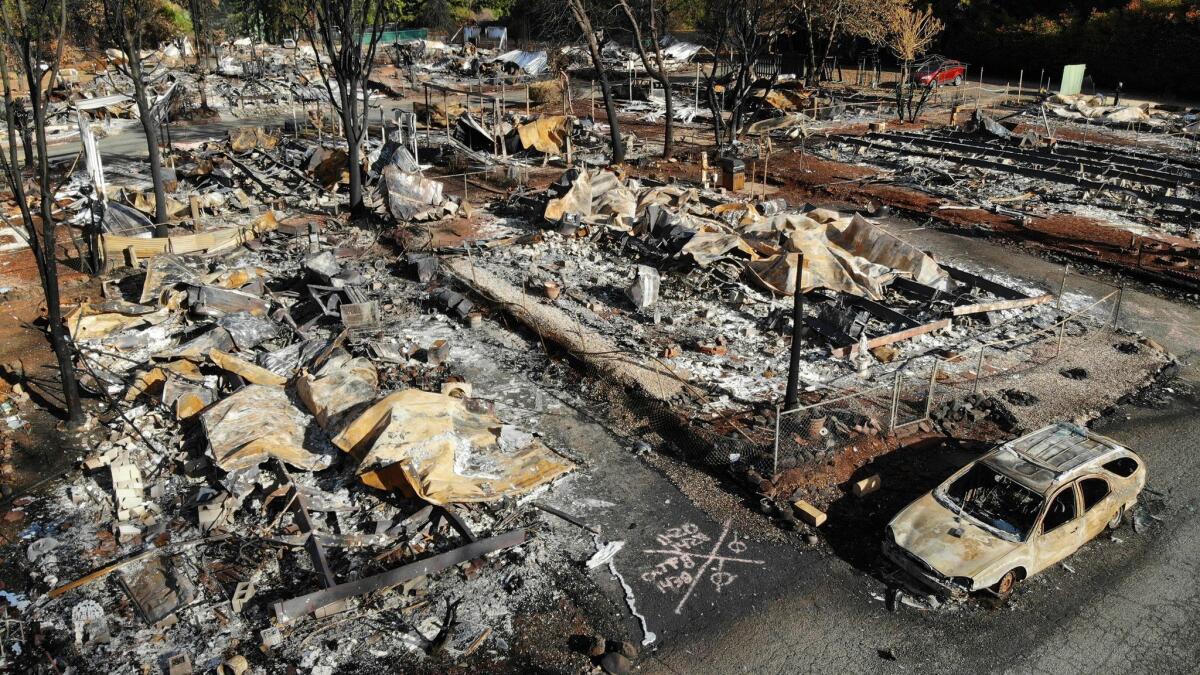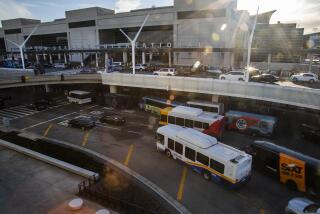Measles outbreak tests health workers already stretched thin by Paradise fire
Northern California health workers are scrambling to control a growing measles outbreak centered on a region that is still reeling from the most destructive wildfire in state history.
In November, the Camp fire decimated the town of Paradise, killed 85 people and left behind billions of dollars in damage. Butte County, about 90 miles north of Sacramento, continues to grapple with the consequences of the blaze.
So the arrival of measles seems to residents like just the latest in a string of bad luck. As of Friday, at least 15 Californians had been diagnosed with measles as part of the outbreak that began last month in Butte County, according to health officials.
“It feels like we keep getting hit with a new disaster every few months,” said Cassie Miracle, who runs a health coalition in Chico, the biggest city in Butte County.
Measles outbreaks have been popping up across the country this year, with hundreds of cases in New York and Washington state. Experts chalk it up to fewer people being vaccinated in the U.S. and across the world; Americans are now more likely to encounter measles abroad, and when they return, the infection is more likely to spread here.
A chaotic ‘new normal’ for Butte County
The Butte County outbreak began when a man caught measles in March during a trip to the Philippines, where thousands of people have come down with the disease this year. The outbreak has expanded outside Butte to Placer, Tehama and Shasta counties.
In attempting to halt a measles outbreak, health workers map every place patients went for four days before and after the characteristic rash appeared, when patients are thought to be the most infectious.
Then the investigators try to contact anyone who may have come near the patient and verify if they are immunized. If those people already have measles symptoms, they will quarantine them. It’s an arduous process in normal circumstances.

But last year, the Camp fire’s destruction of 13,900 homes included some belonging to Butte County health staff. Some employees moved away, further stretching a department that was struggling to meet the needs of its beleaguered community, said department spokeswoman Lisa Almaguer.
In the fire’s immediate aftermath, county health workers sheltered thousands of displaced animals and treated people living in shelters, where there was also a norovirus outbreak. Now, workers are still verifying that properties are cleared of hazardous materials and are helping deal with a major water contamination problem, she said.
The measles outbreak has confirmed what feels like a chaotic “new normal,” Almaguer said. The department is considering calling in reinforcements to help with measles control as the outbreak grows, she said.
“We are having those conversations,” she said. “Our staff is working much longer hours during the day than normal, and we have staff on call over the weekends, and we continue to investigate suspect cases.”
Where is measles in California?
U.S. health officials declared measles eradicated in 2000, but so far this year there have been 555 cases nationwide, they say. One of the most contagious diseases in the world, measles is the first to return when a region’s immunity falls, experts say.
In California, 23 people statewide have been diagnosed with measles this year, according to state data released Thursday. Though the Butte County outbreak is the largest cluster, there have been a smattering of cases around the state.
On Wednesday, health officials warned that a person infected with measles spent time on the Google campus in Silicon Valley. Recently, Long Beach officials alerted travelers that a passenger visited the airport twice while infectious.
In Placer County, health staff started scrambling last month when three people fell sick after visiting the home of the original Butte County patient, said Michael Romero, program manager for the public health department.
County health staff obtained a list of 285 people who were at a gym when the measles patients were also there so they could call them, Romero said.
But it was a tall order for the county’s seven-person investigation team, so they enlisted 25 people from all over the health department in their race against the clock, he said. Nurses were calling people in between their normal duties.
“This is one of those all-hands-on-deck sort of responses,” Romero said. “In my time with the county in the last 16 years, I can’t remember the last measles investigation like this.”
Why California’s outbreak hasn’t mushroomed
California may be spared from the larger outbreaks affecting other states because of a state law that tightened vaccination standards three years ago, experts say.
California’s new law bars parents from excusing their children from vaccines because of their personal beliefs. Now, kids can only escape vaccinations if a doctor says they have a medical reason to do so.
Since the law went into effect, California’s kindergarten vaccination rate has increased from 92.9% to 95.1%, according to state data. Doctors say that a community needs at least 95% immunity to prevent measles from spreading.
In fact, counties afflicted with measles this year tend to have low vaccination rates. Butte County’s kindergarten vaccination rate is close to the state average, but Placer’s is 92.3% and Shasta’s is 90.1%.
“When folks [aren’t] taking vaccination recommendations seriously, this is what can happen,” said Tim Mapes, community education specialist with the Shasta County health department.
Before two people in Shasta County came down with measles this year, there hadn’t been a measles case there since 2014, he said. One of the county’s measles cases is linked to the Butte outbreak, but officials have not yet determined the origin of the other, he said.
Mapes said Shasta health workers retrieved data from ride-sharing companies Lyft and Uber to determine who rode in the same cars as the measles patients so they could contact them and warn them about the exposure. They also got a list of customers from a Walgreens who may have been there at the same time as the people who were sick.
“It’s a big deal when you see a disease that is as contagious as this pop up after five years in your community,” he said. “You don’t want to start seeing that.”
More to Read
Sign up for Essential California
The most important California stories and recommendations in your inbox every morning.
You may occasionally receive promotional content from the Los Angeles Times.











